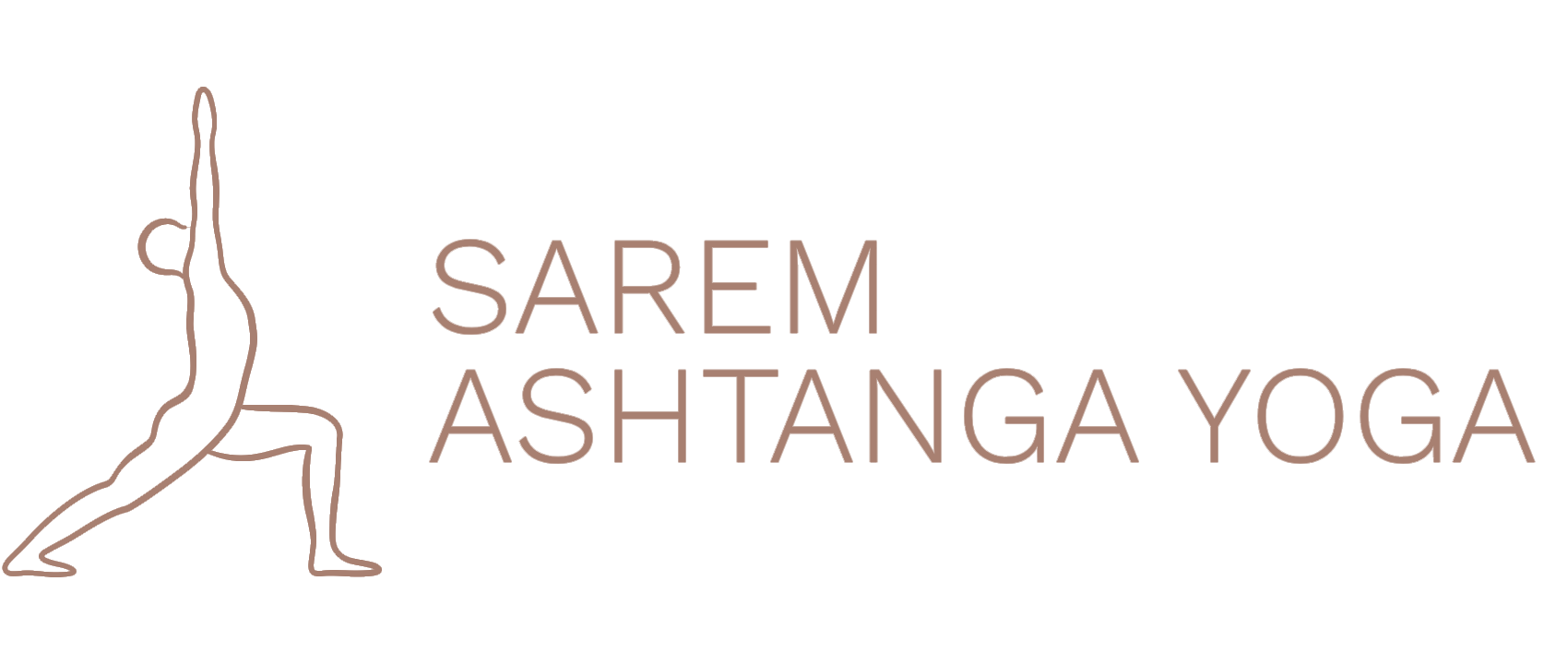Everything is constantly changing. There are different ways to steer the flow of change in a direction that best fits the individual. One such method is Ashtanga Yoga.

Ashtanga is a very dynamic form of Yoga, in contrast to other Yoga styles. Dynamism means movement. Movement always means that some form of power is used. In doing so, the body warms up very quickly and allows us to go deeper into the positions and perceive them with greater intensity. This releases more energy in less time, making it possible to hold poses for a shorter period of time and thus a larger number of poses can be done within a sequence.
Due to the numerous poses, we can reach almost every corner of the body,
which leads to a free and unobstructed flow of energy – a wonderful feeling.
Another enticing aspect of Ashtanga Yoga is the fixed sequence of poses.
After all, it is only through constant repetition that we can deepen and refine
our practice. Through the external routine, in which we combine breath and
movement, our attention is directed inwards. The breath becomes the
connecting link between outside and inside. Meditation in motion can be
experienced. This form of practising Yoga is suitable as an excellent tool for
leading a conscious life off the mat.
In general terms, Yoga means unity. Practising Yoga initiates a change that forges an inner ambience that enables us to recognize the state of unity. The more connected we feel, the more beautiful, richer, more joyful, more ecstatic – the more fulfilled – our lives are.
When teaching a Yoga class, I work on the aspects described here together
with my practising students.
We align the body, breathing becomes freer, energy can flow and by
regularly exceeding our comfort zones, we create ourselves anew. The
learning experience is made all the more intensive by the energy of the
group.

Ashtanga is a very dynamic form of Yoga, in contrast to other Yoga styles. Dynamism means movement. Movement always means that some form of power is used. In doing so, the body warms up very quickly and allows us to go deeper into the positions and perceive them with greater intensity. This releases more energy in less time, making it possible to hold poses for a shorter period of time and thus a larger number of poses can be done within a sequence.
Due to the numerous poses, we can reach almost every corner of the body,
which leads to a free and unobstructed flow of energy – a wonderful feeling.
Another enticing aspect of Ashtanga Yoga is the fixed sequence of poses.
After all, it is only through constant repetition that we can deepen and refine
our practice. Through the external routine, in which we combine breath and
movement, our attention is directed inwards. The breath becomes the
connecting link between outside and inside. Meditation in motion can be
experienced. This form of practising Yoga is suitable as an excellent tool for
leading a conscious life off the mat.
In general terms, Yoga means unity. Practising Yoga initiates a change that forges an inner ambience that enables us to recognize the state of unity. The more connected we feel, the more beautiful, richer, more joyful, more ecstatic – the more fulfilled – our lives are.
When teaching a Yoga class, I work on the aspects described here together
with my practising students.
We align the body, breathing becomes freer, energy can flow and by
regularly exceeding our comfort zones, we create ourselves anew. The
learning experience is made all the more intensive by the energy of the
group.
References
I have been practising yoga since 2001 and owe a debt of gratitude to a lot of teachers.
I came to Sarem for the first time a good twelve years ago, probably because my yoga and I were ready for him, so to speak. For the last ten years, I have only been practising Ashtanga with him, attending the regular Mysore classes and the retreats for a more intensive approach. Sarem is walking proof of what you can achieve with yoga in terms maintaining vitality and inner balance. A true role model. His obvious strength certainly plays a role here, and for rather stock frames such as mine, this is a definite advantage when helping me into positions. This also shows how advanced he himself is in his practice of yoga. Yet what I find particularly impressive is how, even after breaks extending over many weeks, he remembers exactly where his students are in their practice, what injuries or problem areas they have and where there weaknesses are. This enables him to always help you move further. He gently and affably explores your boundaries, respects them, but never really lets up. A calm, balanced, fantastic teacher. I could not imagine a better one. Thank you, Sarem!
I have been practising with Sarem for a few years now. I can't remember how many – time has flown by so quickly.
What immediately struck me about Sarem was his calm demeanour combined with his relaxed and confident way of interacting with students.
You can feel his wealth of experience, his knowledge of yoga and his feeling for how the body work. He is fortunately not someone who is dogmatic in their approach to Ashtanga, instead adapting his Mysore classes to the needs of the group.
He has a precise understanding of where his students are, knows who he needs to entice out of their comfort zone and who he needs to slow down in their eagerness. He demands a lot, but never too much – he is firm but gentle.
He is my companion along my yoga journey, showing patience, good-naturedness and a lot of intuition – and I hope he will continue to do so for a very long time.
I started practising with Sarem in 2009. The yoga community in Vienna at the time reported with anticipation that he was back in Vienna after a long stay in Asia. I was on the look-out for a new studio at the time as my old studio was closing down.
I would describe the first years at Ooom Studio as follows: “My karma enabled me to find the best Asthanga teacher in Vienna in what I considered to be the most beautiful yoga studio at the time. This happy coincidence saw me being able to develop both spiritually and physically in this city with such an experienced, authentic and caring teacher.” I went with Sarem when he joined the Yoga Melange studio, and now I am following him to the H1 centre
I am certainly not his most ambitious student, but my many years of practising yoga have helped me to stay healthy and pain-free. Sarem is a very exacting teacher. It doesn’t matter how many students are in the room, he gives the impression that he knows exactly where I am. He is alo a patient listener who pays attention to the aches, pains and insecurities of his students and never gives the impression of being disinterested in what is currently preoccupying them or causing them doubt.
My daughter has now started practising with Sarem, the next generation so to speak, and accepts him as a teacher.
I am grateful to be able to say that Sarem has been an integral part of my yoga experience for a good seven years now.
His approach has influenced me in such a way that there is often no need for words when we interact with each other, even when I am alone with myself practising yoga and I then really feel how and what I might have, perhaps should have done or wanted to do (in his eyes)...
He has helped me build a strong foundation for my yoga practise – his attention to detail and precision inspire me. And it is great that, aside from the aspiration to perfection, you can always laugh with him.
I have been practising with Sarem since 2017, and regularly since 2018.
The level of calm and precision in his lessons is truly unique.
I like the non-dogmatic way of learning and the use of additional exercises to gradually work up to a position.
But ultimately it is really the meditation and precision that make it something special for me.
If you want to experience the connection between the primary series and meditation, then you should go to the guided lesson on Sunday. Nowhere else will you experience this degree of calm and tranquillity.
I have attended many of Sarem’s retreats and been practising Mysore with him on a regular basis for about six years. He radiates a real sense of calm and personableness, and you really get the feeling that he must be very advanced in his own practise of yoga. His gentle manner is particularly agreeable. He does what he can to push you with subtle pressure when practising, but always fully respects personal boundaries. This makes it easy to you to get better, but just as easy to say “no” or “that’s as far as I can go.” You always get the feeling that Sarem shares in the joy his students show with every step they take, that his work as a teacher is fulfilling and satisfying for him. The perfect blend for me.
Sarem has been practicing and teaching for a very long time (decades). I am very impressed by his experience, professionalism and extensive anatomical and spiritual knowledge.
Sarem's guided classes are characterized by precise, detailed and in-depth instructions, through which I can continue to train and refine my perception and understanding of the system even after years of practice.
For the entire first series on Sunday, Sarem takes two and a half hours with plenty of space at the end of the session for meditation and relaxation. This is always a very special experience for me.
In the Mysore classes I feel in the best possible hands on my personal path thanks to Sarem's undogmatic and authentic nature, his gentle but consistent persistence and loving care and I feel motivated and inspired again and again. Sarem managed to restart a development process for me after years of standstill. I can no longer imagine any other teacher than Sarem.
